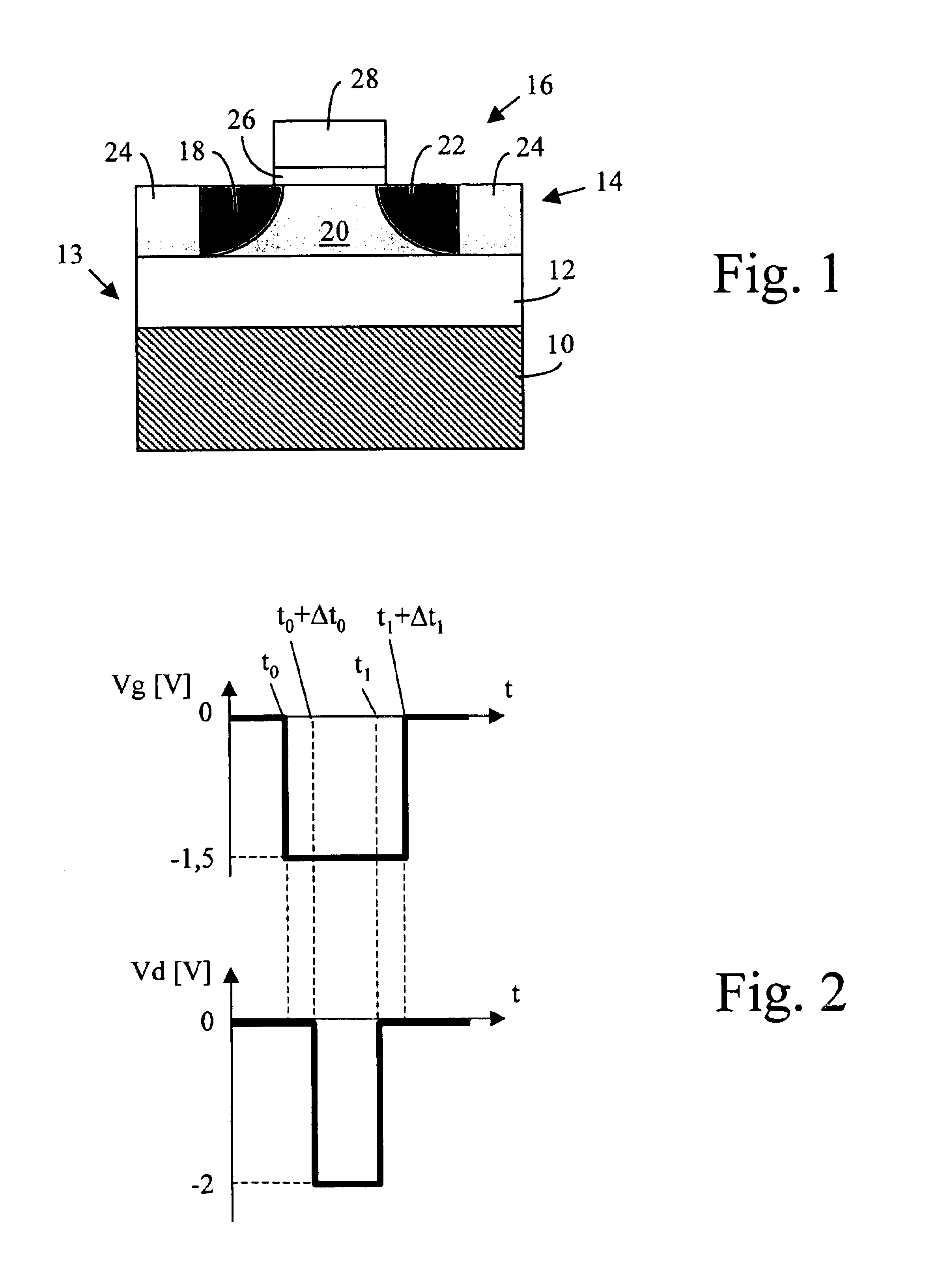Semiconductor device
a technology of semiconductors and devices, applied in the direction of instruments, radiation intensity measurement, transistors, etc., can solve the problems of increasing the complexity of the device, affecting the operation of the device, so as to reduce the number of terminal connections and the effect of higher circuit integration
- Summary
- Abstract
- Description
- Claims
- Application Information
AI Technical Summary
Benefits of technology
Problems solved by technology
Method used
Image
Examples
Embodiment Construction
[0063]Referring firstly to FIG. 1, an NMOS SOI (silicon on insulator) MOSFET (metal-oxide-silicon field effect transistor) comprises a silicon wafer 10 coated with a layer 12 of silicon dioxide, the wafer 10 and layer 12 constituting a substrate 13. A layer 14 formed on the substrate 13 consists of an island 16 of silicon doped with impurities to form a source 18 on n-type material, a body 20 of p-type material and a drain 22 of n-type material, together with a honeycomb insulating structure 24 of silicon dioxide, the honeycomb structure being filled by a plurality of islands 16. The source 18 and drain 22 extend through the entire thickness of the silicon layer 14. An insulating film 26 is formed over body 20, and a gate 28 of doped semiconductor material is provided on dielectric film 26. The production process steps, chemical compositions and doping conditions used in manufacturing the transistor of FIG. 1 will be familiar to persons skilled in the art, and are also described in ...
PUM
 Login to View More
Login to View More Abstract
Description
Claims
Application Information
 Login to View More
Login to View More - R&D
- Intellectual Property
- Life Sciences
- Materials
- Tech Scout
- Unparalleled Data Quality
- Higher Quality Content
- 60% Fewer Hallucinations
Browse by: Latest US Patents, China's latest patents, Technical Efficacy Thesaurus, Application Domain, Technology Topic, Popular Technical Reports.
© 2025 PatSnap. All rights reserved.Legal|Privacy policy|Modern Slavery Act Transparency Statement|Sitemap|About US| Contact US: help@patsnap.com



